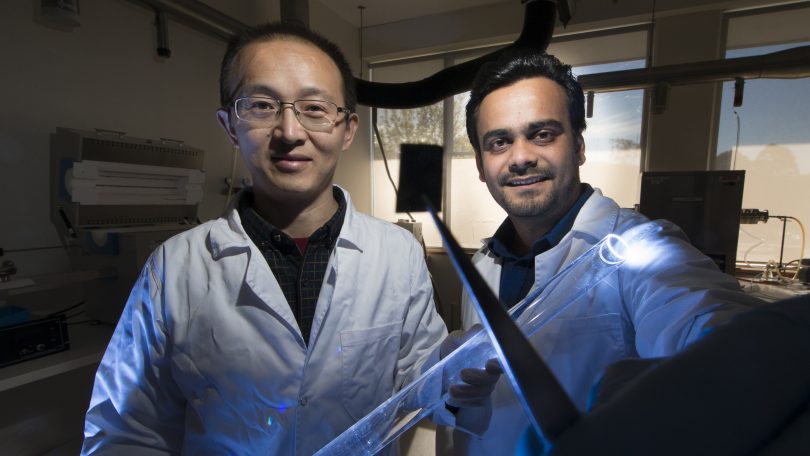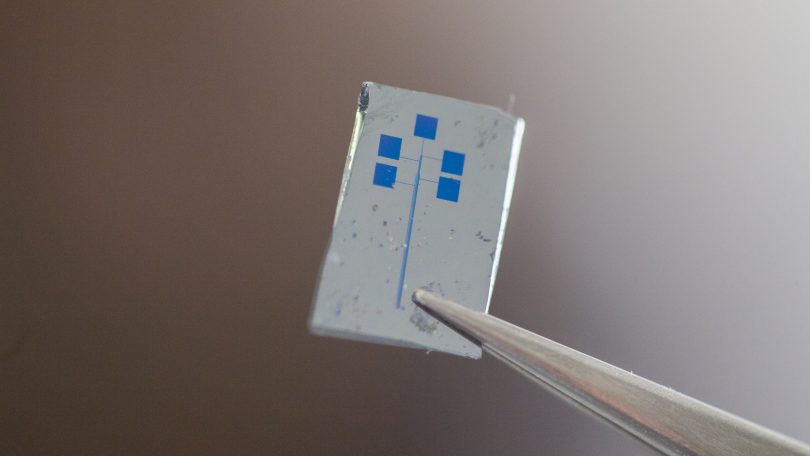
Associate Professor Larry Lu and PhD researcher Ankur Sharma in the lab at the ANU Research School of Engineering. Photos: ANU
For those people who are forever dropping and smashing their mobile phones, ANU engineers may have found the answer.
They have invented a semiconductor with organic and inorganic materials that can convert electricity into light very efficiently, and it is thin and flexible enough to help make devices such as mobile phones bendable.
The ANU says the invention also opens the door to a new generation of high-performance electronic devices made with organic materials that will be biodegradable or that can be easily recycled, promising to help substantially reduce environmentally-damaging e-waste.
Australia produces 200,000 tonnes of e-waste every year but only four per cent of this waste is recycled.
The organic component of the semiconductor has the thickness of just one atom – made from just carbon and hydrogen, while the inorganic part has the thickness of around two atoms.
The ANU says the hybrid structure can convert electricity into light efficiently for displays on mobile phones, televisions and other electronic devices.
Lead senior researcher Associate Professor Larry Lu from the ANU Research School of Engineering said the invention was a major breakthrough in the field.

The ANU team’s semiconducting material, which cannot be seen with the naked eye, sits in between gold electrodes on the chip (pictured) that is a functional transistor. The electrodes serve as electricity input and output points. The chip, which is only 1 cm by 1cm, can hold close to a thousand transistor circuits.
“For the first time, we have developed an ultra-thin electronics component with excellent semiconducting properties that is an organic-inorganic hybrid structure and thin and flexible enough for future technologies, such as bendable mobile phones and display screens,” he said.
PhD researcher Ankur Sharma, who recently won the ANU 3-Minute Thesis competition, said experiments demonstrated the performance of their semiconductor would be much more efficient than conventional semiconductors made with inorganic materials such as silicon.
“We have the potential with this semiconductor to make mobile phones as powerful as today’s supercomputers,” said Mr Sharma, also from the ANU Research School of Engineering.
“The light emission from our semiconducting structure is very sharp, so it can be used for high-resolution displays and, since the materials are ultra-thin, they have the flexibility to be made into bendable screens and mobile phones in the near future.”
The team grew the organic semiconductor component molecule by molecule, in a similar way to 3D printing in a process called chemical vapour deposition.
“We characterised the opto-electronic and electrical properties of our invention to confirm the tremendous potential of it to be used as a future semiconductor component,” Associate Professor Lu said.
“We are working on growing our semiconductor component on a large scale, so it can be commercialised in collaboration with prospective industry partners.”
The work is published in Advanced Materials.












